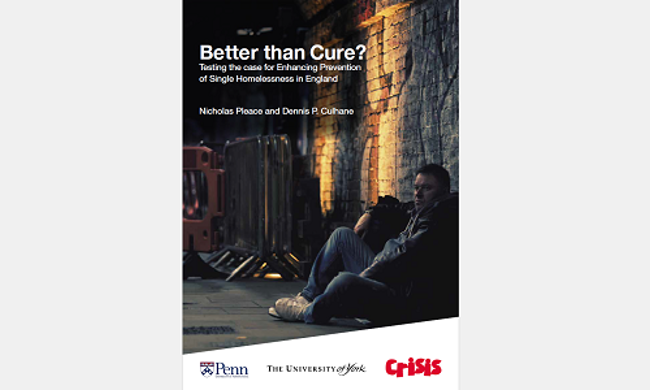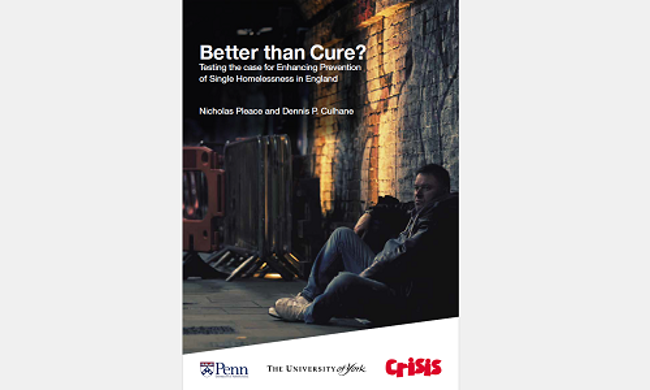Better than cure? (2016)
20.03.2016
Research carried out by the University of York and University of Pennsylvania examining the financial implications of extending homelessness prevention services in England. This report draws on in-depth interviews with 86 people who had been homeless for at least 90 days to unpick the reduction in public spending that would occur if their homelessness had been prevented.
Summary
This research asked 86 people who had been homeless for at least 90 days about
the services they had used. The research also asked them to describe any forms of support that would have prevented their current homelessness.
- Estimated public spending on the 86 people for 90 days was £742,141 in total and £8,630 on average.
- If the 86 people had been homeless for one year with the same pattern of service use, estimated public spending would be £34,518 on average per person per year, a total of some £2.96 million annually.
- For a single homeless population of 40,0001, if estimated costs were at the average level, annual public expenditure would be some £1.38 billion.
- This report uses the available data to estimate the changes in service use that would occur, if someone were not homeless - because their homelessness was prevented - compared to the costs that arose because they were homeless.
- On average, it was estimated that preventing homelessness for one year would result in a reduction in public expenditure of £9,266 per person. The potential saving could be estimated as being as high as £796 thousand.
- It is not always cheaper to prevent homelessness. However, public spending on 65 per cent of the 86 homeless people was estimated as likely to have been less, if their homelessness was successfully prevented, than if they had been homelessness for one year.
- Public spending would fall by £370 million, if 40,000 people were prevented from experiencing one year of homelessness, based on an average estimated reduction in public spending of £9,266 per person, per year.
- Single homeless people can use the NHS and other public services at high rates.
- Falls in spending can be estimated as likely to occur because existing data indicate rates of use of NHS services, drug and alcohol services and mental health services are higher among homeless people than the housed population. Rates of contact with the criminal justice system may also be lower for housed people than homeless people.
- This research was an exploratory study, based partially on estimation. The findings are in line with international evidence, but large scale data merging is required to fully understand the financial costs of single homelessness.
- The real costs of homelessness are the damage it can do to health, well-being and life chances. However, significant spending may be occurring which is not alleviating homelessness, if this money were redirected into enhancement of preventative services and effective models for ending homelessness, such as Housing First, the human and financial costs of single homelessness could be reduced.
Reference
Pleace, N. & Culhane, D.P. (2016) Better than Cure? Testing the case for Enhancing Prevention of Single Homelessness in England. London: Crisis.


